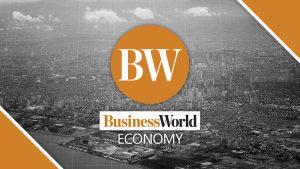Can a taxpayer deduct business expenses related to passive income? Under the BIR’s latest issuance, taxpayers need to identify and segregate their expenses more carefully.
Business expenses inevitably arise, regardless of the nature of operations. Few truths in business are as enduring as the adage: it takes money to make money. With this in mind, the Bureau of Internal Revenue (BIR) issued Revenue Memorandum Circular (RMC) No. 81-2025, providing a clearer compliance framework for taxpayers to determine which business expenses qualify for tax deduction.
While RMC No. 81-2025 focuses on expounding on the deductibility of both ordinary and necessary expenses in relation to Section 34(A)(1)(a) of the Tax Code, this update is crucial to taxpayers as it draws a sharper line between expenses tied to active income and those related to passive income.
Through the RMC, the BIR has made it explicitly clear that only expenses directly tied to the generation of active income — that is, income derived from the conduct of trade, business, or profession — may be considered deductible.
The RMC provides a comprehensive framework for how taxpayers must approach expense deductibility. It provided a detailed description of when an expense can be considered ordinary and necessary.
ACTIVE INCOME VS PASSIVE INCOME
In addition, the RMC also emphasized that expenses must not only be customary and helpful in the taxpayer’s line of business, but they must also be intrinsically linked to income-generating activities that require active participation.
Thus, when a taxpayer derives both active and passive income, the RMC requires the taxpayer to segregate the expenses that are directly attributable to active business operations from those related to passive income generation. Moreover, each income stream, whether subject to regular tax, preferential rates, tax-exempt, or final tax, should have its expenses correctly identified. The RMC describes active income as earnings derived from activities that involve substantial effort or participation, such as selling goods, providing services, or engaging in professional practice. These are the core operations of a business, and expenses incurred in these areas — like salaries, rent, utilities, and marketing — are considered both ordinary and necessary for generating revenue. Active income typically arises from direct involvement (active pursuit) in trade, business, or professional activities; active income results from the taxpayer’s active pursuit of its primary business or trade.
In contrast, passive income includes interest, dividends, royalties, and certain rental income, earned with minimal or no active involvement. These income streams are typically subject to final withholding tax, meaning they are taxed at source and are not subject to further deductions. Hence, expenses related to managing investments that generate passive income — such as fees for financial advice, interest from loans to finance investments, or brokerage services — do not qualify as deductible under the ordinary and necessary rule.
Last, the RMC also provides that passive income can become active income if the taxpayer repeatedly and systematically engages in activities that produce such income, transforming it into a business venture. Likewise, income typically considered active may be treated as passive if it is earned occasionally or without any substantial or recurring effort. Ultimately, classification hinges on whether the income results from habitual, business-driven actions or from merely holding assets and earning returns without substantial participation. Thus, the degree, frequency, and intent of participation in the income-producing activity are the main considerations in classifying income as passive or active.
The requirement of expenses needing to be related to active income poses various challenges for taxpayers as discussed herein.
MIXED SOURCES OF INCOME
Taxpayers who earn both active and passive income must now distinguish expenses more rigorously, ensuring that only those tied to the defined active operations are claimed, which may lead to more disallowed deductions during audits.
Many businesses engage in both operational and investment activities. Under the new interpretation, expenses related to managing passive income streams — even if part of a broader business strategy — are excluded, potentially increasing their effective tax burden.
For example, a company earns most of its money from making and selling a particular item. But the company also invests its excess cash in investment products and earns interest. It also owns shares in various companies and regularly receives dividends. Under the new RMC, the company can only subtract costs directly related to making and selling the particular item and not the costs related to making the investments.
Hence, the company is now tasked with identifying and segregating expenses from various income streams. This task can be a challenge, particularly if the expenses are not specifically identifiable. Some allocation may be needed, and any allocation method may face challenges from the BIR.
Businesses that rely both on active and passive income to support operations must now carefully manage their finances, as they can’t reduce their tax bill using related expenses from passive income. For many, this means rethinking investment strategies and preparing for a potentially higher tax burden. Given the definition and classification of income as passive or active, the definition and application to taxpayers may not always be clear-cut, leading to interpretation issues and potential conflicts with the tax authorities.
By disallowing deductions for costs related to generating passive income, the policy could disincentivize investment behavior, especially among small and medium enterprises that desire to earn interest or dividend income to supplement active operations and manage cash flows.
INCOME SUBJECT TO FINAL WITHHOLDING TAX
Final withholding tax (FWT) is considered a final tax on certain passive income. When a tax is final, it means the tax withheld at source is deemed the full and complete payment of tax on that income, leaving no room for further deductions or adjustments. In essence, the Tax Code has simplified the process by applying a low, final tax on the gross amount to tax the gross amount in a final, simplified manner.
The BIR stressed that allowing deductions on income already subject to final withholding tax could result in a double benefit for taxpayers — paying a lower, final tax rate while also reducing taxable income through expense deductions. To prevent this, RMC 081-2025 links the non-deductibility of expenses to the final tax treatment of passive income. This ensures that passive income, such as interest or dividends, is taxed on a gross basis —without subtracting related costs — maintaining the simplicity and finality of the withholding system. It also reinforces the principle that only active income, which is taxed under regular income tax rates, may be reduced by ordinary and necessary business expenses.
SUBSTANTIATION REQUIREMENTS
The RMC points out that taxpayers must substantially prove by evidence or records the deductions claimed under the law; otherwise, the same will be disallowed. The mere allegation of the taxpayer that an item of expense is ordinary and necessary does not justify its deduction. Pieces of evidence, such as official invoices and vouchers, must be presented to substantiate the business expenses.
INORDINATELY LARGE EXPENSES
The expense must meet the test of reasonableness in terms of amount. The RMC reiterated that an inordinately large expense cannot be considered an ordinary expense even if it is necessary. For example, an expense which nearly equaled half of the total expenses claimed may be considered as inordinately large. Hence, it could not be considered “ordinary,” even if it might be “necessary.”
The RMC added that extraordinary and unusual amounts paid to individuals (natural or juridical) as compensation for their supposed services, but without any relation to the measure of their actual services, cannot be regarded as ordinary and necessary expenses.
WHAT BUSINESS OWNERS SHOULD DO
Given the mandate of the RMC, taxpayers are encouraged to
• Review income sources; identify which are active and which are passive.
• Segregate expenses; ensure only those tied to active income are claimed.
• Prepare documentation; keep clear records to support deductions.
• Reassess investment strategies; consider the tax implications of passive income.
CONCLUSION
In summary, the BIR’s goal is to simplify tax compliance, prevent abuse, and uphold the integrity of the final tax system through RMC 81-2025.
RMC No. 81-2025 clarified how taxpayers interpret and apply the “ordinary and necessary” rule for expense deductibility. By drawing a sharper line between active and passive income, the BIR emphasized a framework that demands greater diligence in expense classification and tax planning.
While the intent is to simplify compliance and preserve the integrity of the final withholding tax system, the impact may be more complex — especially for businesses with diversified income streams. Hence, taxpayers need to be more attentive in their classification and substantiation of their business expenses.
Let’s Talk Tax is a weekly newspaper column of P&A Grant Thornton that aims to keep the public informed of various developments in taxation. This article is not intended to be a substitute for competent professional advice.
Guillermo Benito G. Soliven is an associate from the Tax Advisory & Compliance practice area of P&A Grant Thornton, the Philippine member firm of Grant Thornton International Ltd.

